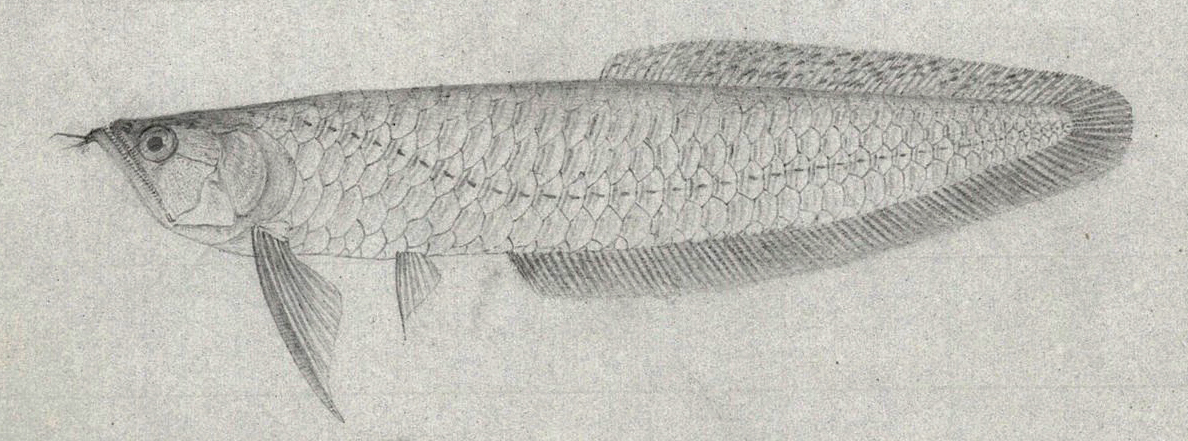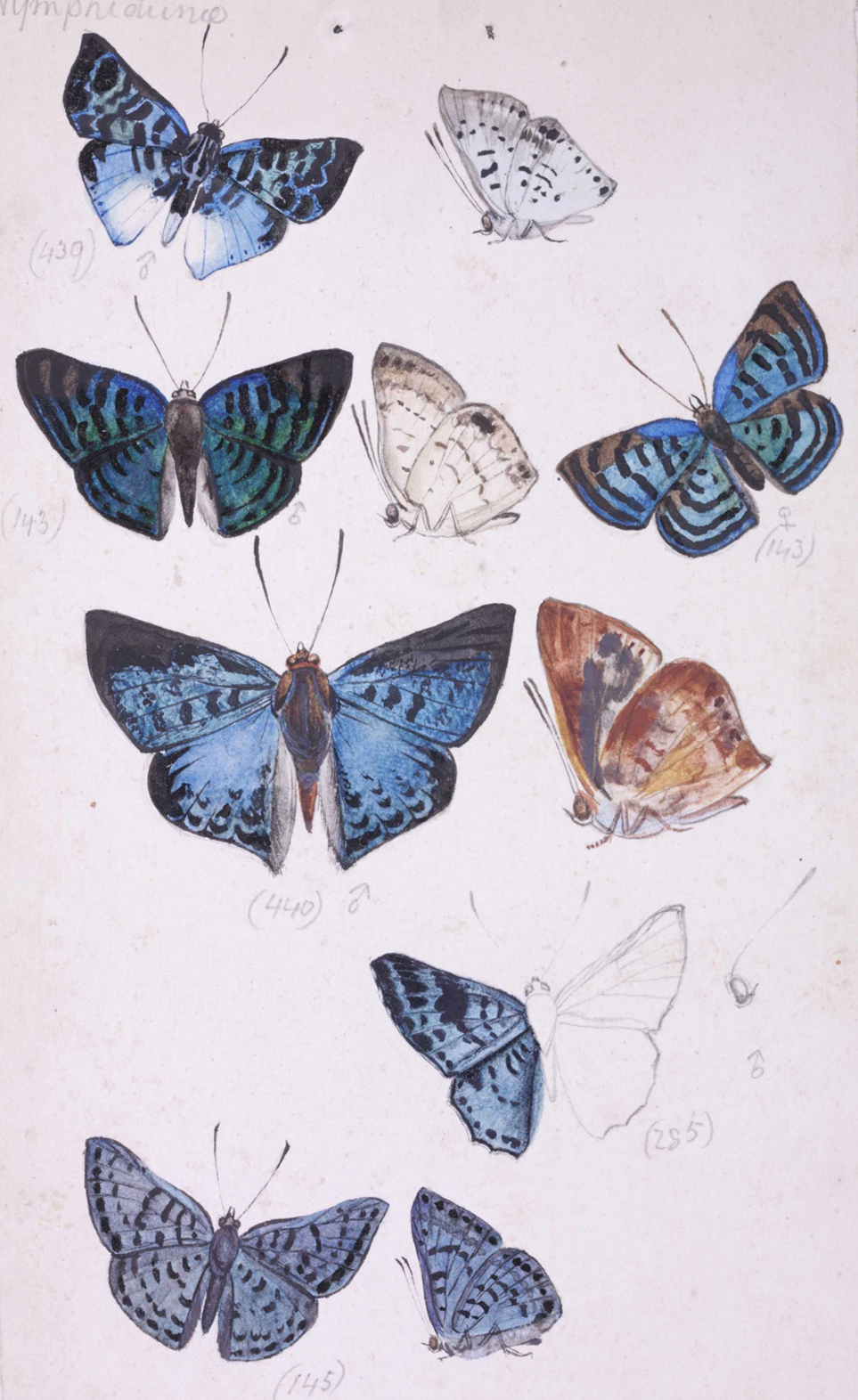Beautiful pencil drawings and watercolour paintings of Amazonian fish and insects by Alfred Russel Wallace and Henry Walter Bates are among the many historic paper treasures released online today by the Wallace Correspondence Project.

One of Wallace's fish drawings (silver arowana). Copyright Natural History Museum, London.
Wallace and Bates were two of the most important biologists and natural history collectors of the 19th century. Today, high-quality digital scans of their scientific artwork join more than 23,000 images of documents, drawings and paintings in the Wallace Correspondence Project's newly upgraded digital archive, Wallace Letters Online.
Wallace Correspondence Project Director Dr George Beccaloni said: 'In the mid-19th century when Alfred Russel Wallace and his companion Henry Walter Bates were collecting animal specimens in Amazonia, there were no small portable cameras, so if you wanted an image of something then someone would have to laboriously draw or paint it. Fortunately both Wallace and Bates were excellent artists, unlike some of their colleagues, such as Charles Darwin!'

Wallace's c. 200 intricate drawings of fish and Bates' two Amazonian notebooks, filled with his exquisite watercolour paintings of butterflies and other insects, are some of the greatest treasures of the Museum's Library and Archives. They can now be viewed in the Wallace Letters Online database, which has been updated to include records of nearly 500 new items, as well as mini biographies of many of Wallace’s correspondents.
Pioneers of evolutionary theory
Wallace is best known for co-authoring with Darwin in 1858 the article which first proposed the theory of evolution by natural selection. Bates discovered what is known as Batesian mimicry in butterflies, where 'tasty' species have evolved to look like toxic species, so that predators avoid attacking them. This idea provided powerful early support for Darwin and Wallace's theory.
In 1848 Wallace and Bates travelled from England to the Amazon to study and collect animal specimens and try to understand how species evolve. At that time evolution was a hot topic thanks to a best selling book on the subject called Vestiges of the Natural History of Creation. Although the establishment rejected the idea in favour of special creation by God, Wallace believed it was '...an ingenious hypothesis strongly supported by some striking facts and analogies but which remains to be proved by more facts...' He and Bates spent four and eleven years in Brazil respectively, and although they collected thousands of animal species, including hundreds new to science, they failed to gain much insight into how new species arise. That revelation would be left to Wallace whilst ill with fever on a remote Indonesian island in early 1858.
Ship wreck
Wallace amassed a huge collection of specimens during his stay in the Amazon but when he was half way across the Atlantic on his way home in 1852, his ship caught fire and he and the crew had to scramble into the two lifeboats.
The ship then sank, taking with it Wallace's irreplaceable collections of insects, birds and other animals. All he had managed to rescue from his smoke-filled cabin was a tin box containing some of his notes and sketches, including his drawings of fish. After ten days drifting in the open ocean Wallace and the crew were miraculously picked up by a passing cargo ship, and he and his sketches made it back to England.
Online archive of Wallace-related manuscripts
High quality digital scans of Wallace and Bates' artwork can be seen in a new version of Wallace Letters Online which was launched today. It contains records of 5,860 letters, notebooks and other manuscripts, plus 23,050 digital images and 4,375 transcripts. Of these, 449 manuscripts, 3,671 images and 794 transcripts have been added since it was last updated in November 2014.
'The new version also includes a feature which provides users with biographical information about Wallace’s 1,637 correspondents. We now have at least some biographical information for 668 of them - including most of the famous people he corresponded with. We hope this feature will allow users to better understand the letters - since knowing exactly who the letter writer or recipient was, is obviously rather helpful.' said Dr Beccaloni.
[For another version of this article see http://www.nhm.ac.uk/about-us/news/2015/july/amazonian-artwork-pioneers-evolutionary-theory-now-accessible-online.html]
Related Information
- Wallace's fish drawings: http://www.nhm.ac.uk/research-curation/scientific-resources/collections/library-collections/wallace-letters-online/6295/7280/S/details.html
- Bates' notebook, volume 1: http://www.nhm.ac.uk/research-curation/scientific-resources/collections/library-collections/wallace-letters-online/6302/7297/S/details.html
- Bates' notebook, volume 2: http://www.nhm.ac.uk/research-curation/scientific-resources/collections/library-collections/wallace-letters-online/6303/7298/S/details.html
- Dr George Beccaloni
- Wallace Letters Online
- Wallace Correspondence Project homepage
-
Video of talk about the project by the project's Archivist Ruth Benny
